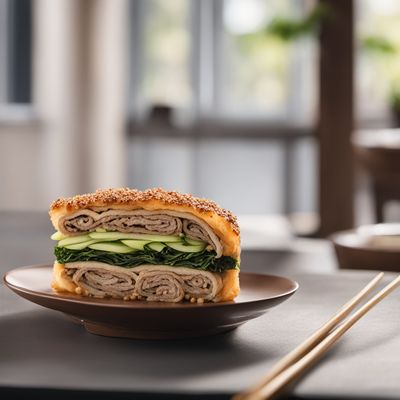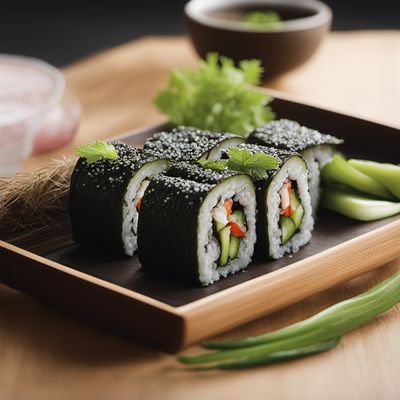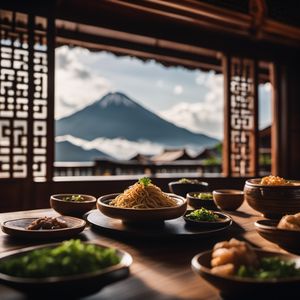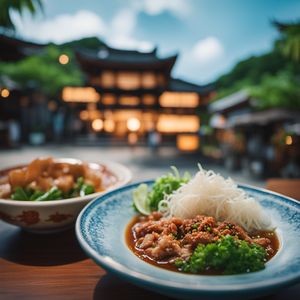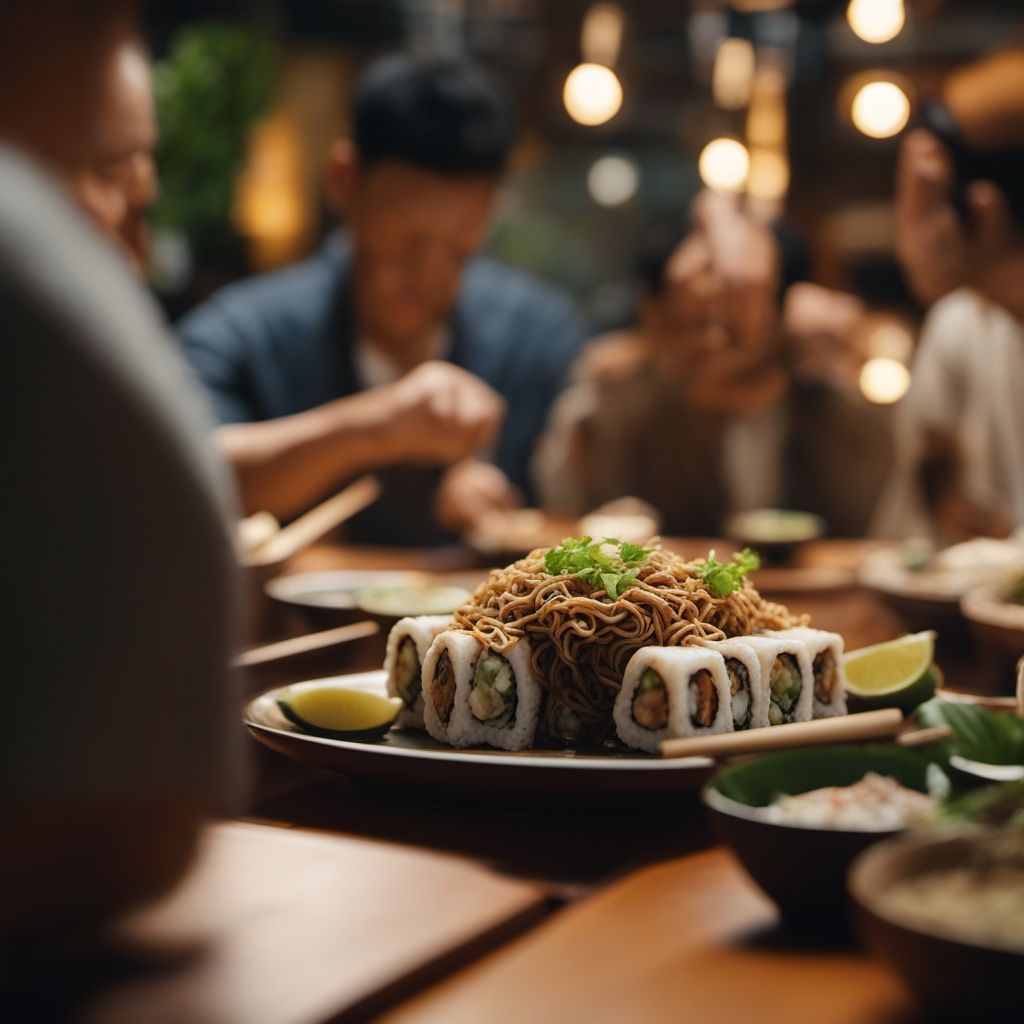
Dish
Soba maki
Soba maki is made by cooking soba noodles and then wrapping them in nori seaweed. The noodles are typically mixed with a variety of ingredients such as cucumber, avocado, and crab meat before being rolled up in the nori. The dipping sauce is made from soy sauce, mirin, and dashi broth. Soba maki is a healthy and delicious dish that is low in calories and high in protein and fiber.
Origins and history
Soba noodles have been a staple food in Japan for centuries and are made from buckwheat flour. Nori seaweed is also a common ingredient in Japanese cuisine and is often used to wrap sushi rolls. Soba maki is believed to have originated in the Edo period (1603-1868) and has been a popular snack in Japan ever since.
Dietary considerations
Soba maki is a great option for those who are looking for a gluten-free or vegetarian dish. It is also low in fat and calories, making it a good choice for those who are watching their weight.
Variations
There are many variations of soba maki, with different fillings and dipping sauces. Some popular fillings include shrimp, tuna, and pickled vegetables. The dipping sauce can also be made with different ingredients such as wasabi or ginger.
Presentation and garnishing
Soba maki is typically served on a small plate with the dipping sauce on the side. It is often garnished with sesame seeds or chopped scallions.
Tips & Tricks
To make soba maki, it is important to cook the soba noodles until they are al dente. Overcooked noodles will be too soft and will not hold their shape when rolled in the nori. It is also important to use fresh nori seaweed to ensure that it is pliable and easy to work with.
Side-dishes
Soba maki is often served with a side of pickled ginger or wasabi. It can also be served with a small salad or vegetable dish.
Drink pairings
Soba maki pairs well with green tea or sake. The light and refreshing flavors of the dish complement the subtle flavors of these beverages.
Delicious Soba maki recipes
More dishes from this category... Browse all »
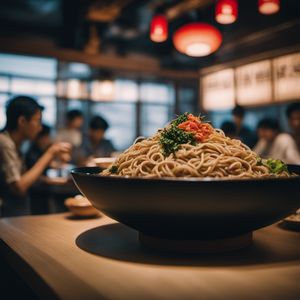
Abura soba
Japanese cuisine
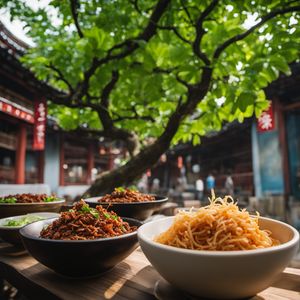
Ants Climbing a Tree
Chinese cuisine

Asahikawa ramen
Japanese cuisine
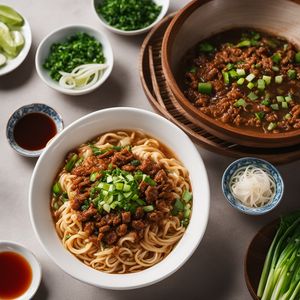
Biangbiang Noodles
Chinese cuisine

Bibim guksu
Korean cuisine
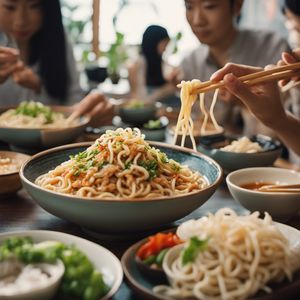
Bukkake udon
Japanese cuisine

Burnt Miso Ramen
Japanese cuisine

Bánh canh
Vietnamese cuisine
